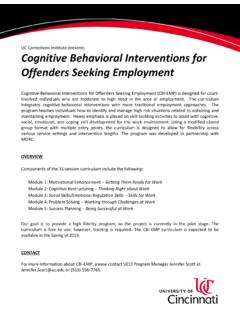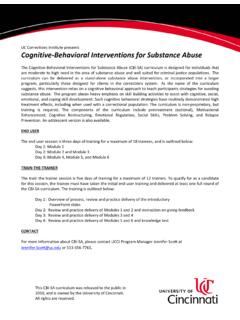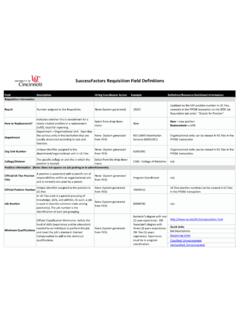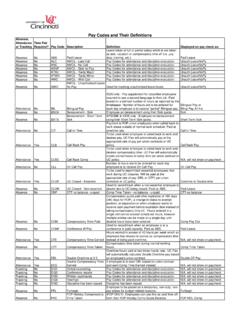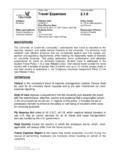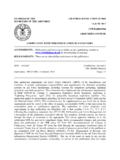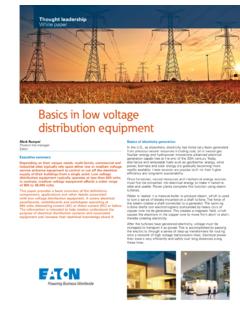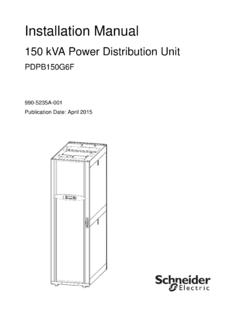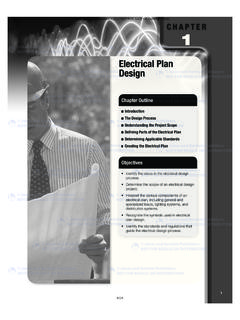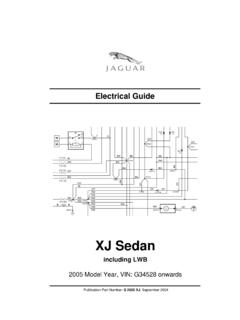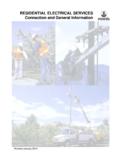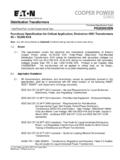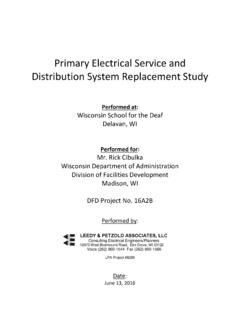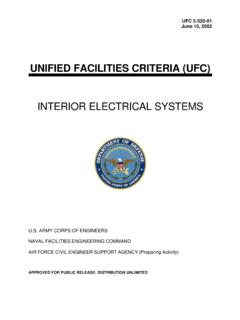Transcription of ELECTRICAL B POWER DISTRIBUTION BASIS OF DESIGN
1 ELECTRICAL : BUILDING POWER DISTRIBUTION DESIGN GUIDELINES AND STANDARDS BPD 1 BASIS OF DESIGN This section applies to the DESIGN and installation of building POWER DISTRIBUTION systems. DESIGN Criteria This section contains the architectural, structural, and mechanical provisions for building ELECTRICAL systems. The ELECTRICAL designer shall coordinate these requirements with the other disciplines to ensure these requirements are satisfied.
2 Note: Use Drawing 2, Typical Building POWER DISTRIBUTION Riser, as a guide for building POWER systems. Coordinate with Construction Management the DISTRIBUTION concepts, including load calculations, calculated fault duties, protective device coordination methods, and grounding practices, being utilized on the DESIGN . Architectural Provisions Provide separate service entrance ELECTRICAL rooms for each of the normal and emergency systems in the basement, preferably adjacent to the utility tunnel and on an exterior wall.
3 Equipment access shafts to the outside and walk-in access from the tunnel system shall be provided wherever possible. The DESIGN shall take into consideration the possibility of flooding when below grade. DISTRIBUTION within the building shall be via readily accessible ELECTRICAL rooms and/or closets. These must be independent from all other types of rooms or closets, , communications, telephone, custodial, audiovisual, etc. As a general guide, provide one floor ELECTRICAL DISTRIBUTION room to serve each 15,000 to 20,000 square feet.
4 Equipment room and equipment space requirements should exceed minimum National ELECTRICAL Code (NEC) requirements and shall be large enough to accommodate the equipment and provide space for future equipment. Eventually, panels will become full, requiring the addition of new panels. This is true even for fairly new facilities and is especially prevalent in laboratory and science buildings. These future wall and floor space provisions shall be shown on the DESIGN drawings so that space is reserved.
5 Typically, 6-foot hot sticks are used to work on high-voltage equipment. Provide adequate working space per NEC and the National ELECTRICAL Safety Code. DISTRIBUTION switchboards, panelboards, and dry transformers over 30 kVA shall be located in ELECTRICAL rooms. Rooms shall be stacked for riser efficiency and be ELECTRICAL : Building POWER DISTRIBUTION November 2004 DESIGN GUIDELINES AND STANDARDS BPD 2 centrally located to keep feeder lengths to a minimum.
6 Several rooms may be necessary to accommodate the building configuration and system DESIGN . Refer to Drawing 3, Typical Floor ELECTRICAL Room. Closets should be a minimum 2 feet deep by 6 feet wide and equipped with full-width double doors opening into a building corridor. Branch panels shall be located in closets located throughout the floor or wing. In laboratories and similar areas, branch panels may be mounted on or in common corridor walls. Transformer ambient noise and electromagnetic field (EMF) emissions from ELECTRICAL equipment and risers can negatively impact the equipment and function in neighboring spaces.
7 This includes spaces immediately above and below these rooms, closets, and risers. Therefore, the space plan shall be reviewed to determine whether modifications are required. Provide adequately sized access pathways for the repair, maintenance, and eventual replacement of the equipment. Equipment access pathways shall be large enough to allow for the removal of transformers, primary switches, and other large pieces of equipment. These paths of egress shall be shown on the building drawings. Weights of transformers could exceed floor loading if other than slab-on-grade basement areas are necessary for egress.
8 Make sure that lifting eyes and floor loading are accommodated for in the DESIGN . Padmount transformers and switchgear must be accessible by vehicular crane and have sufficient working space per NEC and the National ELECTRICAL Safety Code. Mechanical Provisions Coordinate with the Mechanical Engineer ventilation requirements in ELECTRICAL rooms and closets containing transformers or other heat-generating sources. The ventilation shall be supplied and filtered by a ventilation system. Coordinate fire protection requirements in ELECTRICAL rooms and vaults with the Architect and the Mechanical Engineer.
9 The system shall satisfy the code while minimizing the risk of electrocution. Sprinklers in high-voltage ELECTRICAL vaults create extremely hazardous conditions when they discharge, creating an electrocution hazard for workers. Avoid installation of mechanical piping and ductwork in ELECTRICAL vaults, rooms, or closets except where required for operation of the ELECTRICAL equipment. Piping and ductwork must never be installed directly over any transformer or switchgear. Sprinklers installed to protect the ELECTRICAL equipment are the only exception.
10 Drain lines from the floors above shall not be piped through the ELECTRICAL rooms below. The University does not permit the use of drip pans as a mitigating means that would ELECTRICAL : Building POWER DISTRIBUTION November 2004 DESIGN GUIDELINES AND STANDARDS BPD 3 allow the piping to be installed in these areas. Apply NEC 450-47 for all University ELECTRICAL vaults, rooms, and closets. Structural Provisions Provide concrete bases and housekeeping pads for all transformers and equipment, seismically designed with structural connections to the floor slab, and channel or angle iron frames for welded equipment fastening.


